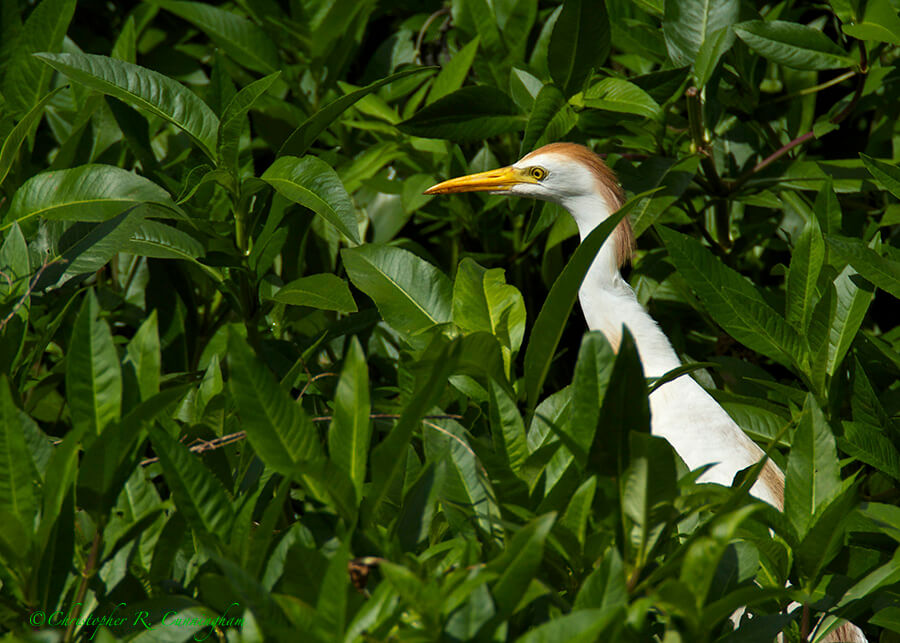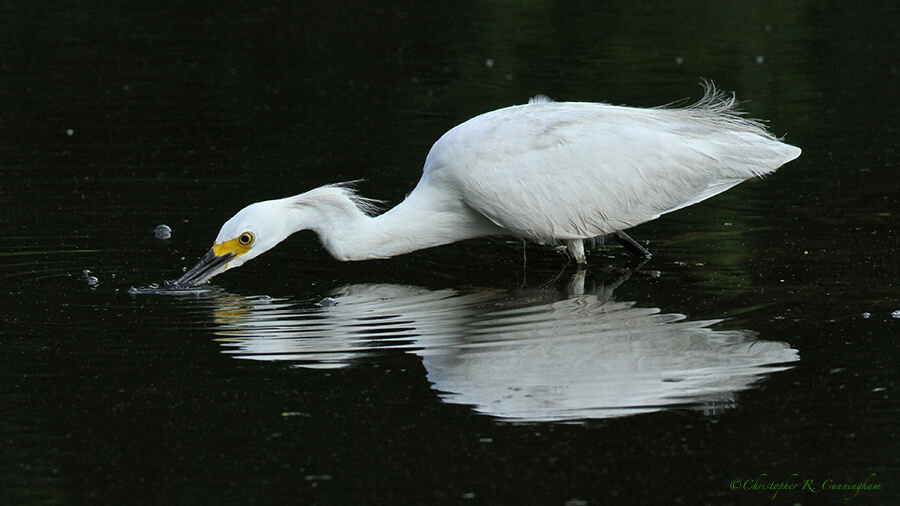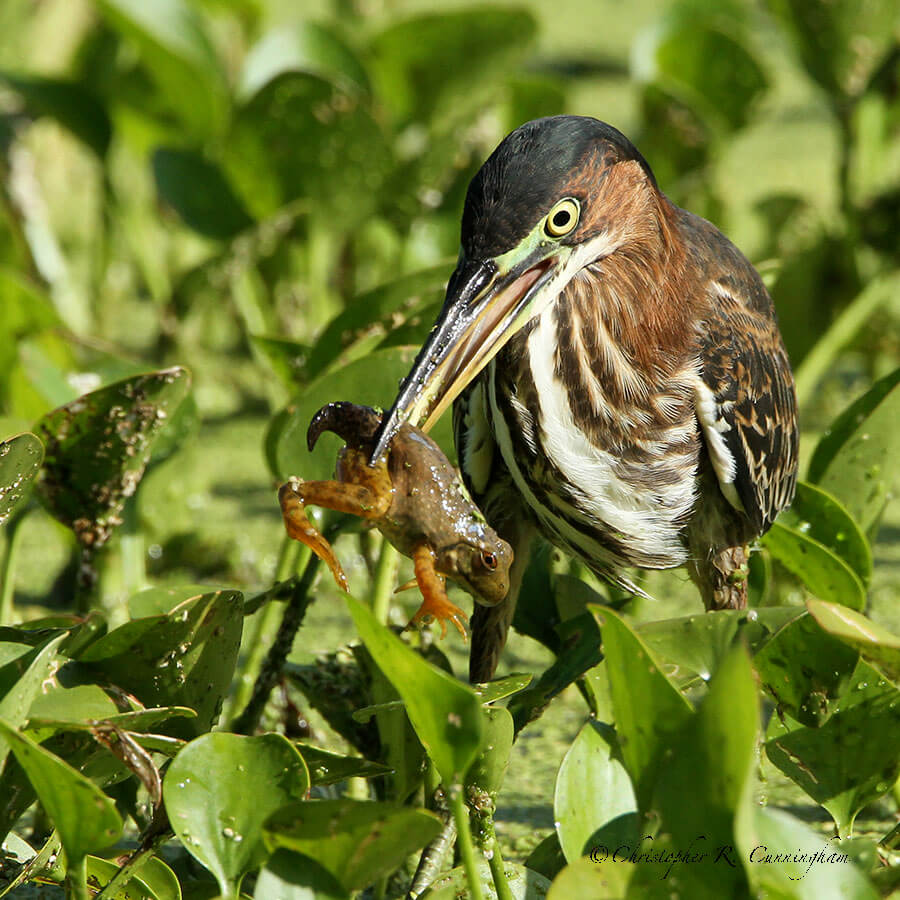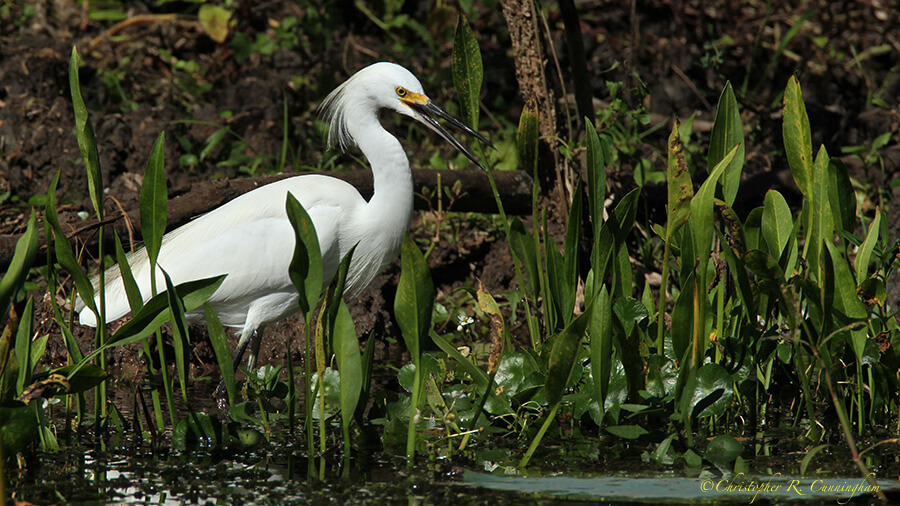
Snowy Egrets are known for shuffling their bright yellow feet in the shallow water to scare up dinner. This summer I also caught one employing a bubble-blowing hunting technique to attract invertebrates and small fish.
On Saturday (11/2) at Elm Lake, Brazos Bend State Park, Texas I noticed another Snowy Egret fishing/hunting strategy that was new to me–and one that also involves scaring up prey. The egret shown above tracked Pied-billed Grebes back and forth as they chased fish and crawfish in the shallows, perhaps 3-4 feet from the shore. Likely fish and invertebrates scatter as grebes go swimming past–and likely this egret was making use of this to pick off prey responding to the grebes. During this shadowing behavior, the egret was quite good at predicting just where the grebe would surface. Perhaps the grebes were visible, at least sometimes, from the egret’s vantage point? Or was this wader ESP? In any case, the egret would often dash to a position on the shore closest to where the Grebe would suddenly emerge from the water.
Commensalism, a symbiosis in which one organism benefits and another is largely unaffected, is likely the label an ecologist would place on the above relationship. But could it be mutalism? Did the grebes benefit from the presence of the egret? Perhaps the egret could have revealed the presence of predators lurking in the shallows or the weeds? Did the grebes have one eye out on a friend on the shore who might signal (through behavior) the presence of an alligator lurking on the shore otherwise undetected? Or a nasty old alligator gar floating, log-like in the shallows? Perhaps the egret chased prey items (like plump juicy frogs) from the shoreline into the water? Food for thought.
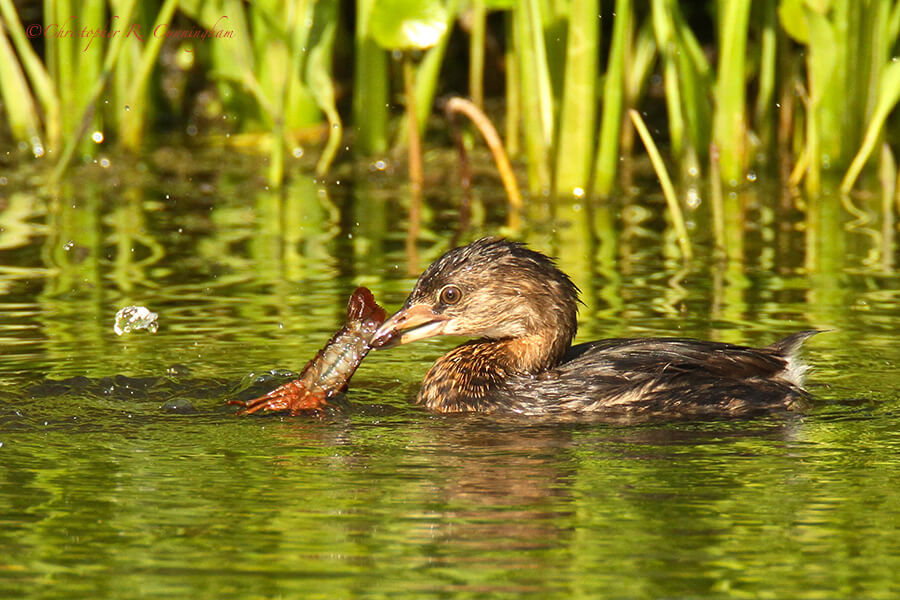
Competition has been shown to be useful up to a certain point and no further, but cooperation, which is the thing we must strive for today, begins where competition leaves off.–FDR
©2013 Christopher R. Cunningham. All rights reserved. No text or images may be duplicated or distributed without permission.




